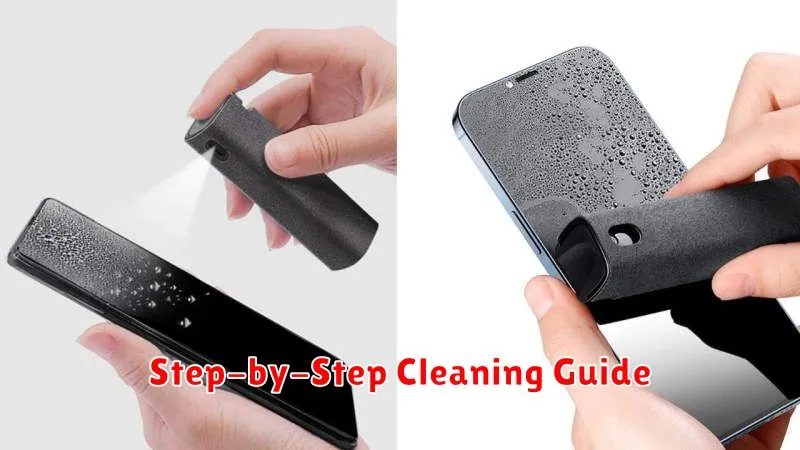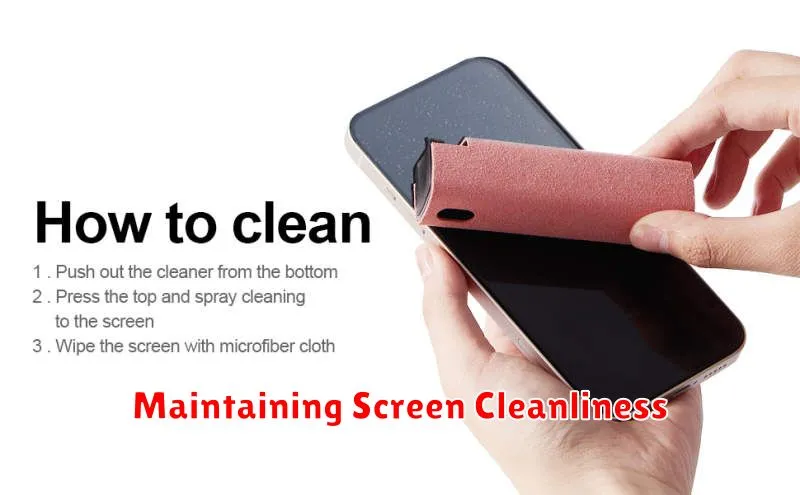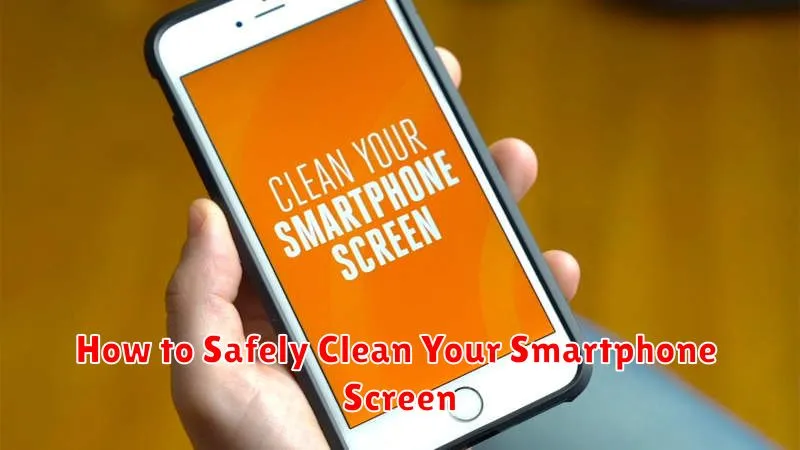Maintaining a clean smartphone screen is essential not only for clear visibility but also for hygiene and the longevity of your device. Safely cleaning your smartphone screen requires more than just a quick wipe with any cloth. Using improper cleaning methods can lead to scratches, damage to the oleophobic coating, and ultimately, a less responsive touchscreen. This guide will provide you with the necessary steps and recommended materials to safely and effectively clean your smartphone screen, ensuring its pristine condition and optimal functionality.
Learn how to clean your smartphone screen without causing damage. We’ll cover the safest cleaning methods, debunk common myths about screen cleaning, and recommend the best tools and materials to use. By following these simple steps, you can keep your smartphone screen clean, clear, and free from harmful bacteria while preserving its delicate surface. Discover the secrets to a spotless smartphone screen and ensure a longer lifespan for your device by adopting these safe cleaning practices.
Choosing the Right Cleaning Materials
Selecting the appropriate cleaning materials is crucial for safe and effective smartphone screen cleaning. Using the wrong materials can scratch the screen’s delicate surface or leave behind unwanted residue.
Recommended Materials:
- Microfiber Cloth: This is the ideal choice. Its soft, lint-free nature effectively removes fingerprints and smudges without scratching.
- Distilled Water: If your screen requires more than a dry wipe, lightly dampen a microfiber cloth with distilled water. Tap water may contain minerals that can leave streaks.
Materials to Avoid:
- Paper Towels: These are too abrasive and can leave tiny scratches.
- Household Cleaners: Chemicals like ammonia or window cleaners can damage the oleophobic coating on your screen.
- Compressed Air: While seemingly harmless, the force of compressed air can damage the microphone or speaker.
Step-by-Step Cleaning Guide

Before you begin, ensure your smartphone is powered off. This is a crucial safety precaution.
Step 1: Gather your materials. You will need a soft, lint-free microfiber cloth, similar to the type used for cleaning eyeglasses. Avoid abrasive materials like paper towels or clothing. You may also need a small amount of distilled water if necessary.
Step 2: Gently wipe the screen. Using the microfiber cloth, gently wipe the screen in a circular motion. This will remove dust and fingerprints. Do not apply excessive pressure.
Step 3: (Optional) Dampen the cloth. If your screen has stubborn smudges, lightly dampen the microfiber cloth with distilled water. Do not spray water directly onto the screen. Ensure the cloth is only slightly damp, not wet.
Step 4: Dry the screen. Use a dry section of the microfiber cloth to dry the screen completely.
What to Avoid When Cleaning
Maintaining a clean smartphone screen is essential, but using the wrong cleaning methods can cause irreparable damage. Avoid harsh chemicals that can strip the oleophobic coating, which protects your screen from fingerprints and smudges. Never use abrasive cleaners like window cleaner, household cleaning sprays, or bleach. These can scratch the delicate glass and compromise the touch sensitivity.
Also, avoid using paper towels, tissues, or abrasive cloths. These materials contain tiny fibers that can scratch the screen. Similarly, compressed air can force debris into the speaker grills and other openings, causing further damage.
Avoid excessive moisture. While a slightly damp cloth is acceptable, never spray liquids directly onto the screen. Liquids can seep into the device through the openings, damaging internal components. Lastly, avoid applying excessive pressure when cleaning. Too much pressure can damage the screen and affect its functionality.
Preventing Scratches
Preventing scratches on your smartphone screen is crucial for maintaining its clarity and responsiveness. A few preventative measures can significantly extend the life and look of your device.
Use a Screen Protector: A screen protector, whether tempered glass or plastic film, acts as a sacrificial barrier against scratches. It absorbs the impact of keys, coins, and other sharp objects that may come into contact with your screen.
Store Carefully: Avoid placing your phone in pockets or bags with abrasive materials like sand, keys, or coins. Designate a specific pocket or compartment for your phone, ensuring it’s free from potential scratch hazards.
Clean with Appropriate Materials: Using harsh materials like paper towels or abrasive cloths can introduce micro-scratches. Always opt for a soft, lint-free microfiber cloth for cleaning.
Maintaining Screen Cleanliness

Maintaining a clean screen is crucial for optimal smartphone usage. Regular cleaning prevents the buildup of grime that can hinder visibility and potentially harbor bacteria.
Daily maintenance can involve simply wiping the screen with a clean, dry microfiber cloth. This removes fingerprints and dust that accumulate throughout the day. For more thorough cleaning, use a slightly damp (not wet) microfiber cloth. Ensure the cloth is only slightly damp to avoid moisture entering your device.
Avoid using harsh chemicals, abrasive materials, or compressed air. These can damage the screen’s protective coating and lead to scratches.
Consider using a screen protector. This thin layer of plastic or glass provides an additional barrier against scratches and smudges, simplifying cleaning. If a screen protector gets dirty, it can be easily replaced.

